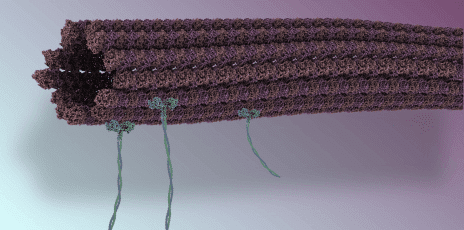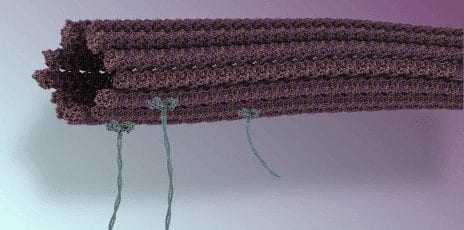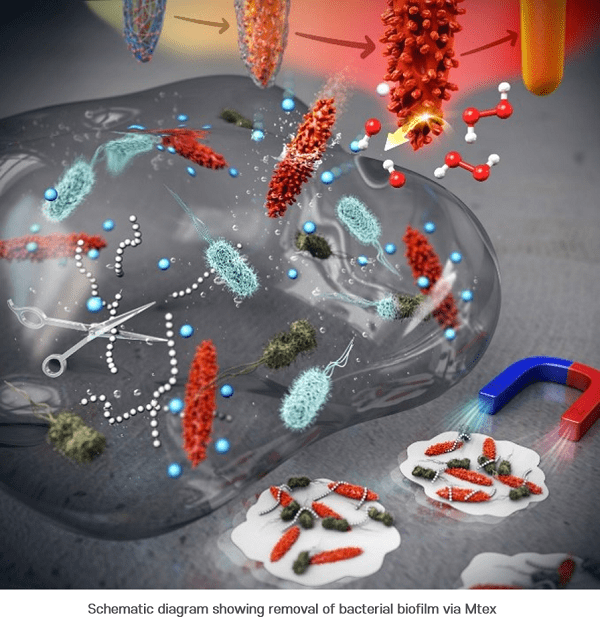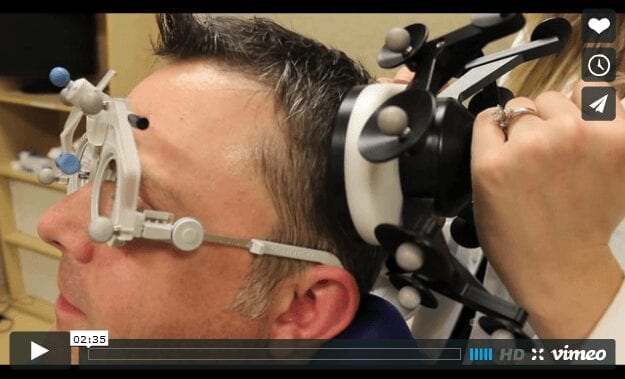
ETH researchers have realised a long-held dream: inspired by an industrial assembly line, they have developed a nanoscale production line for the assembly of biological molecules.
Cars, planes and many electronic products are now built with the help of sophisticated assembly lines. Mobile assembly carriers, on to which the objects are fixed, are an important part of these assembly lines. In the case of a car body, the assembly components are attached in various work stages arranged in a precise spatial and chronological sequence, resulting in a complete vehicle at the end of the line.
The creation of such an assembly line at molecular level has been a long-held dream of many nanoscientists. “It would enable us to assemble new complex substances or materials for specific applications,” says Professor Viola Vogel, head of the Laboratory of Applied Mechanobiology at ETH Zurich. Vogel has been working on this ambitious project together with her team and has recently made an important step. In a paper published in the latest issue of the Royal Society of Chemistry’s Lab on a Chip journal, the ETH researchers presented a molecular assembly line featuring all the elements of a conventional production line: a mobile assembly carrier, an assembly object, assembly components attached at various assembly stations and a motor (including fuel) for the assembly carrier to transport the object from one assembly station to the next.
Production line three times thinner than a hair
At the nano level, the assembly line takes the form of a microfluid platform into which an aqueous solution is pumped. This platform is essentially a canal system with the main canal just 30 micrometres wide – three times thinner than a human hair. Several inflows and outflows lead to and from the canal at right angles. The platform was developed by Vogel’s PhD student Dirk Steuerwald and the prototype was created in the clean room at the IBM Research Centre in Rüschlikon.
The canal system is fitted with a carpet made of the motor protein kinesin. This protein has two mobile heads that are moved by the energy-rich molecule ATP, which supplies the cells of humans and other life forms with energy and therefore make it the fuel of choice in this artificial system.
The Latest on: Nanoscale assembly line
[google_news title=”” keyword=”Nanoscale assembly line” num_posts=”10″ blurb_length=”0″ show_thumb=”left”]
via Google News
The Latest on: Nanoscale assembly line
- New imaging technique provides a much closer look at fibril assemblieson April 26, 2024 at 10:47 pm
A new imaging technique developed by engineers at Washington University in St. Louis can give scientists a much closer look at fibril assemblies, stacks of peptides like amyloid beta, most notably ...
- Unlocking the functional potential of mesoporous materials through modular nanocrystal assemblyon April 25, 2024 at 5:00 pm
However, the dream of truly tailor-made mesoporous materials, with functionalities precisely engineered from the nanoscale up, has long remained ... with Ultrahigh Density and Spatial Dispersity").
- Imaging technique shows new details of peptide structureson April 24, 2024 at 11:19 am
A new imaging technique developed by engineers at Washington University in St. Louis can give scientists a much closer look at fibril assemblies—stacks of peptides that include amyloid beta, most ...
- Intel completes assembly of first commercial High-NA EUV chipmaking tool — addresses cost concerns, preps for 14A process development in 2025on April 18, 2024 at 7:02 am
Intel Foundry announced it had completed the assembly of the industry's first commercial High Numerical Aperture (High-NA) Extreme Ultraviolet (EUV) machine in its D1X fab in Oregon.
- Who Invented the Assembly Line?on December 20, 2023 at 2:27 pm
In the early 20th century, a groundbreaking innovation changed the landscape of manufacturing forever: the assembly line. In this system, a product moves along a line, with each worker performing a ...
via Bing News











